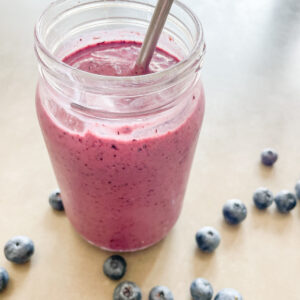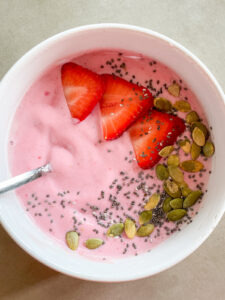Blackberries vs Blueberries: 21 Key Differences
When you think of nutritious food and the healthiest fruits, fresh berries probably come to mind. But what berry is best? In this article, we'll look at blackberries vs blueberries. Read on to find 21 differences between these types of berries, including their health benefits, taste, uses in cooking and more.
Or jump to...
- What are some different types of blueberries?
- What are some different types of blackberries?
- What are some other types of healthy berries?
- Berry Recipes from Each Healthy Bite
- More Nutritional Comparison Articles
Blackberries vs Blueberries: 21 Comparisons
- Blackberries vs Blueberries: Health Benefits
- Blackberries vs Blueberries: Nutrient Content
- Blackberries vs Blueberries: Vitamin Content
- Caloric Content
- Antioxidants
- Blood Sugar Impact
- Phytochemicals
- Skin Benefits
- Bone Health
- Eye Health
- Weight Management
- Heart Health
- Cancer Prevention
- Anti-Inflammatory Properties
- Taste
- Appearance
- Texture
- Usage in Cooking
- Preservation
- Culinary Pairings
- Cultivation
Blackberries vs Blueberries: Health Benefits
Here is an overview of the health benefits of blackberries vs blueberries.
- Blackberries: The high fiber content in blackberries aids in digestion and promotes regular bowel movements, helping to prevent constipation. Their antioxidants support heart health by reducing oxidative stress and lowering cholesterol levels. Additionally, the vitamins and minerals in blackberries contribute to immune function, bone health, and overall wellness.
- Blueberries: Blueberries are known for their benefits to brain health, with studies suggesting that regular consumption can improve memory and cognitive function. The high levels of antioxidants in blueberries help reduce inflammation and protect against neurodegenerative diseases. They also support cardiovascular health by lowering blood pressure and improving cholesterol levels.
Blackberries vs Blueberries: Nutrient Content
Here is a summary of the nutrient content of blackberries vs blueberries.
- Blackberries: Blackberries are notably high in dietary fiber, providing about 5 grams of fiber per 100 grams, which supports digestive health and helps maintain regular bowel movements. Along with having a lot of fiber, they are also an excellent source of vitamin c and vitamin k, contributing to immune function and bone health. The combination of fiber and essential vitamins makes them a nutritious addition to the diet, supporting overall health. Their nutrient density helps meet daily nutritional needs without a significant caloric intake.
- Blueberries: Blueberries, while lower in fiber compared to blackberries, are packed with antioxidants, particularly anthocyanins, which help reduce oxidative stress and inflammation in the body. They are also high in vitamins C and K, and contain notable amounts of manganese, which is essential for bone health and metabolic processes. The rich antioxidant content supports cellular health and may help prevent chronic diseases.
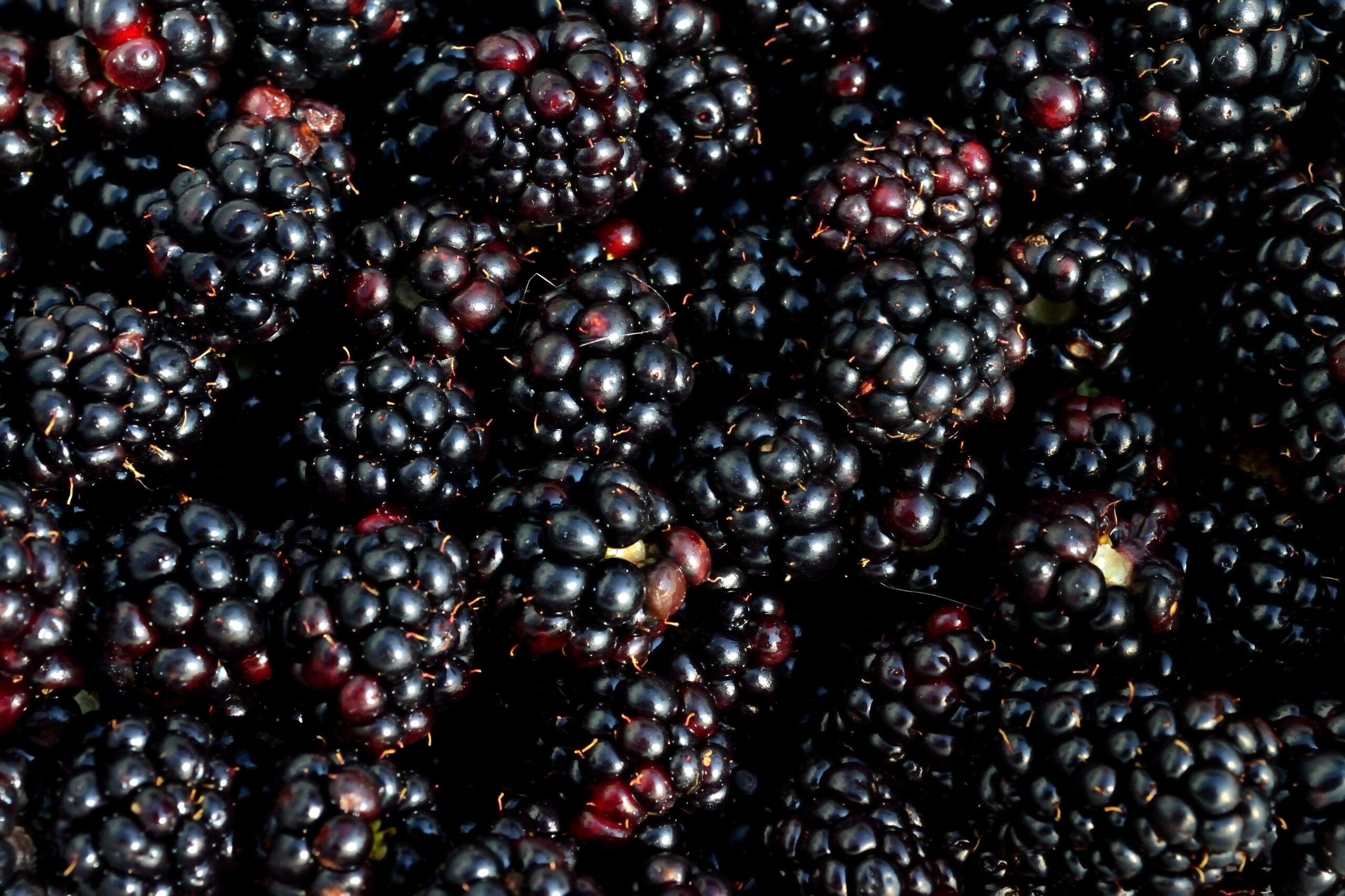
Blackberries vs Blueberries: Vitamin Content
Here is an overview of the vitamin content of blackberries vs blueberries.
- Blackberries: These berries are an excellent source of vitamins C and K. Vitamin C is crucial for immune system function, collagen production, and skin health. Vitamin K plays a significant role in blood clotting and maintaining healthy bones. A 100-gram serving of blackberries provides about 35% of the daily value for vitamin C, making them a beneficial fruit for boosting immunity and overall health.
- Blueberries: Blueberries are also an excellent source of vitamin K and vitamin C, which are vital for immune support and bone health, respectively. Additionally, they are high in manganese, which is important for bone formation, nutrient metabolism, and maintaining a healthy immune system. These vitamins and minerals make blueberries a powerful fruit for supporting various bodily functions and maintaining overall wellness.
Caloric Content
- Blackberries: With approximately 43 calories per 100 grams, blackberries are a low-calorie fruit that offers a significant amount of fiber and nutrients. This low caloric value makes them ideal for those looking to manage their weight without sacrificing essential nutrients. Their rich flavor and nutritional benefits provide a satisfying addition to various meals and snacks.
- Blueberries: A serving of blueberries contains around 57 calories per 100 grams, which is still relatively low, making them an excellent choice for a nutrient-dense, low-calorie snack. Despite the slightly higher calorie content compared to blackberries, they offer substantial health benefits due to their high levels of antioxidants and vitamins. Their low-calorie nature makes them a great option for those looking to maintain or reduce their weight while enjoying a sweet treat.
Antioxidants
- Blackberries: Rich in ellagic acid and quercetin, blackberries offer significant antioxidant properties that help protect the body from oxidative stress and inflammation. Ellagic acid has been studied for its potential anti-carcinogenic properties, making blackberries a beneficial fruit for reducing the risk of certain cancers. Quercetin, another potent antioxidant, supports heart health and may have anti-inflammatory effects.
- Blueberries: Blueberries are renowned for their high anthocyanin content, which gives them their deep blue color and provides powerful antioxidant effects. These antioxidants help neutralize free radicals, protecting cells from damage and reducing the risk of chronic diseases. Blueberries also contain pterostilbene, antioxidant compounds linked to cognitive benefits and improved metabolic health.
Blood Sugar Impact
- Blackberries: With a lower glycemic index, blackberries cause a slower and more stable rise in blood sugar levels, making them suitable for people with diabetes or those looking to manage their blood sugar. Their high fiber content further helps in moderating blood sugar spikes by slowing down the absorption of sugar into the bloodstream.
- Blueberries: While blueberries have a slightly higher glycemic index, they still have a relatively low impact on blood sugar levels compared to many other fruits. The fiber in blueberries helps slow down the digestion and absorption of carbohydrates, contributing to better blood sugar control. Their natural sweetness also makes them a healthier alternative to sugary snacks.
Phytochemicals
- Blackberries: These berries are rich in polyphenols and flavonoids, which contribute to their deep color and potent health benefits. These compounds have been shown to reduce inflammation, support heart health, and protect against certain types of cancer. The high levels of phytochemicals in blackberries make them a powerful addition to a healthy diet.
- Blueberries: Blueberries are particularly high in anthocyanins, which are responsible for their vibrant color and strong antioxidant properties. These antioxidants help protect the body from oxidative stress and inflammation, reducing the risk of chronic diseases. Pterostilbene, another compound found in blueberries, has been linked to improved cognitive function and beneficial effects on metabolic health.
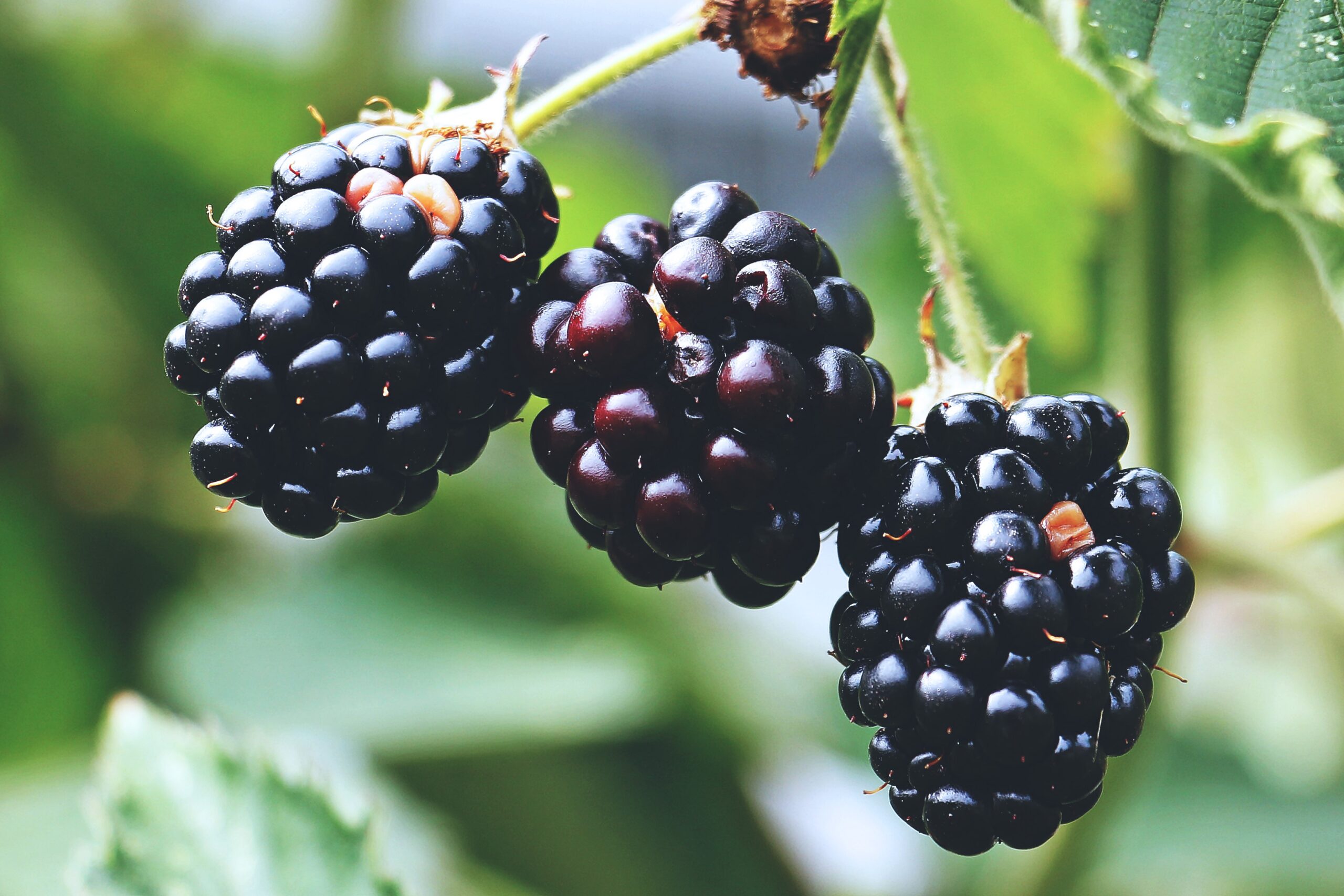
Skin Benefits
- Blackberries: The high vitamin C content in blackberries supports collagen production, which is essential for maintaining skin elasticity and preventing wrinkles. Their antioxidants help protect the skin from damage caused by free radicals, promoting a healthy and youthful appearance. Regular consumption of blackberries can improve skin texture and hydration.
- Blueberries: The antioxidants in blueberries, along with vitamins C and E, help protect the skin from environmental damage and aging. These nutrients promote skin repair and rejuvenation, improving overall skin health. Blueberries also support collagen production, which helps maintain skin firmness and elasticity.
Bone Health
- Blackberries: They provide manganese, which is essential for bone development and metabolism. This mineral helps in the formation of bone cartilage and improves bone density. Additionally, the vitamin K content in blackberries supports bone health by aiding in calcium absorption and bone mineralization.
- Blueberries: High in vitamin K, blueberries play a crucial role in bone metabolism and maintaining bone density. Adequate vitamin K intake is associated with a reduced risk of bone fractures and osteoporosis. Blueberries also provide manganese, which supports bone formation and metabolic processes.
Eye Health
- Blackberries: The anthocyanins in blackberries can help improve vision and protect against age-related eye diseases. They also contain vitamin A, which is essential for maintaining good vision and overall eye health. Regular consumption of blackberries can help reduce the risk of cataracts and macular degeneration.
- Blueberries: Rich in antioxidants, particularly vitamin A, blueberries help maintain eye health and can reduce the risk of cataracts and macular degeneration. Their high levels of antioxidants protect the eyes from oxidative stress and inflammation, promoting long-term eye health.
Weight Management
- Blackberries: The high fiber content promotes satiety, helping you feel full longer and reducing overall calorie intake. They are also low in calories, making them an excellent choice for weight management. The combination of low calories and high fiber makes blackberries a satisfying and nutritious snack.
- Blueberries: Blueberries are nutrient-dense and low in calories, providing essential nutrients without adding excessive calories. Their natural sweetness can satisfy sugar cravings healthily, supporting weight management. Regular consumption of blueberries can help control appetite and reduce the risk of overeating.
Heart Health
- Blackberries: Antioxidants and fiber in blackberries help lower cholesterol levels and reduce inflammation, promoting heart health. Regular consumption can improve arterial function and blood pressure, reducing the risk of heart disease. The vitamins and minerals in blackberries also support overall heart function and health.
- Blueberries: Blueberries are known for their ability to lower blood pressure and reduce LDL cholesterol levels. Their high levels of antioxidants support overall help to prevent cardiovascular disease by protecting the heart and blood vessels from oxidative damage. Blueberries also help improve endothelial function, which is crucial for maintaining healthy blood circulation.
Cancer Prevention
While both types of berries are linked to cancer prevention, here is an overview of the specific anti-carcinogenic properties of blackberries vs blueberries.
- Blackberries: The ellagic acid found in blackberries has been shown to have anti-carcinogenic properties, potentially reducing the risk of certain cancers. Their antioxidants also help protect cells from DNA damage and reduce inflammation, which can contribute to cancer prevention. Regular consumption of blackberries can support overall cellular health and reduce the risk of chronic diseases.
- Blueberries: High in antioxidants, blueberries can help protect cells from oxidative damage. This cell damage can lead to cancer. Their anti-inflammatory properties further contribute to their cancer-preventive effects. Studies suggest that regular consumption of blueberries may reduce the risk of certain types of cancer, including breast and colon cancer.
Anti-Inflammatory Properties
- Blackberries: They contain tannins and flavonoids, which have strong anti-inflammatory effects. These compounds can help reduce inflammation and support overall health, potentially alleviating symptoms of chronic inflammatory conditions. The anti-inflammatory properties of blackberries make them a beneficial addition to a diet focused on reducing inflammation.
- Blueberries: Blueberries are known for their potent anti-inflammatory properties due to their high antioxidant content. Regular consumption can help reduce chronic inflammation linked to various diseases, including heart disease, diabetes, and cancer. The anti-inflammatory effects of blueberries support overall health and well-being.
Taste
- Blackberries: Blackberries have a distinct, robust flavor characterized by their tartness, which is often balanced with a subtle sweetness when fully ripe. The tart notes are more pronounced in underripe berries, while the sweetness comes forward as they mature. This complexity in flavor makes them a favorite in both sweet and savory dishes, adding a bright, tangy note. They are particularly popular in desserts where the tartness can balance out the sugar content.
- Blueberries: Blueberries are celebrated for their sweet, mildly tart taste, which is more consistent compared to the varying tartness of blackberries. The sweetness is more prominent, making them a versatile fruit for various culinary uses. Their balanced flavor allows them to be eaten fresh as a snack, added to cereals, or incorporated into a wide range of baked goods. The slight tartness enhances their ability to pair well with both sweet and savory ingredients.
Appearance
- Blackberries: These berries are larger and more oblong, with a bumpy surface due to their cluster of individual drupelets, each containing a seed. Their deep purple to almost black color intensifies as they ripen, indicating peak flavor. The size and shape can vary slightly depending on the variety, but they generally have a more substantial presence compared to blueberries. Their dark, rich color also makes them visually appealing in dishes.
- Blueberries: Blueberries are smaller and rounder, with a smooth skin that ranges from blue to dark purple. They often have a slight silvery bloom on their surface, which is a natural protective coating. This bloom is an indicator of freshness and helps the berries retain moisture. Their uniform size and round shape make them easy to incorporate into various dishes without altering the texture significantly. Wild blueberries are an especially tiny fruit. They grow naturally in the wild, often found in forested and mountainous regions. Unlike cultivated blueberries, wild blueberries are smaller and have a more intense, sweet-tart flavor.
Texture
- Blackberries: Blackberries are juicy and slightly seedy, providing a combination of softness from the flesh and a mild crunch from the seeds. This texture can be appealing in baked goods, where the seeds add a pleasant contrast. However, the presence of seeds may be a consideration for some people when used in smooth-textured dishes like sauces or smoothies. The juiciness of blackberries also makes them an excellent choice for fresh eating and in fruit salads.
- Blueberries: Blueberries have a smooth, juicy texture without noticeable seeds, making them particularly great for fresh consumption and in dishes where a smooth texture is desired. They burst with juice when bitten into, which adds a refreshing quality to foods and beverages. This smooth texture allows them to blend seamlessly into smoothies, yogurts, and sauces without altering the desired consistency.
Usage in Cooking
- Blackberries: Their tartness makes blackberries an excellent ingredient for balancing sweet dishes like pies, cobblers, and jams. They are also used in savory recipes, such as salads, where their acidity complements other ingredients, and in sauces for meats, adding a rich, fruity note. Blackberries can be cooked down to make preserves or used fresh in desserts and beverages.
- Blueberries: Blueberries are incredibly versatile and are commonly used in muffins, pancakes, and as toppings for yogurt and cereal. Their ability to retain their shape and flavor when baked makes them ideal for a variety of baked goods. They are also popular in smoothies and salads, where their sweetness and texture add a pleasant contrast to other ingredients.
Preservation
- Blackberries: These berries can spoil quickly if not stored properly, often lasting only a few days in the refrigerator. Freezing them is a common method to extend their shelf life, allowing them to be enjoyed out of season. When frozen, blackberries maintain their nutritional value and can be used in smoothies, baking, or as a topping for various dishes.
- Blueberries: Blueberries tend to have a longer shelf life when stored in the refrigerator, often staying fresh for up to two weeks. They also freeze exceptionally well, retaining their texture and flavor, which makes them convenient for year-round use. Frozen blueberries are perfect for smoothies, baking, and cooking, ensuring a steady supply of this nutritious fruit.
Culinary Pairings
- Blackberries: Their tartness pairs well with fresh herbs like mint and basil, adding complexity to salads and beverages. They also complement other tart fruits like apples and pears in desserts, providing a balanced flavor profile. Blackberries are often used in savory dishes, where their acidity can enhance the richness of meats and cheeses.
- Blueberries: Blueberries pair wonderfully with citrus flavors, enhancing their natural sweetness. They also work well with spices like cinnamon and nutmeg in baked goods, adding depth and warmth to the flavor. In savory dishes, blueberries can be used to add a sweet contrast to salads and sauces.
Cultivation
- Blackberries: Grown on thorny or thornless bramble bushes, blackberries require more space and support structures for optimal growth. They are often grown in temperate regions and can produce fruit for several years, with proper pruning and maintenance. Blackberry bushes can be susceptible to pests and diseases, requiring regular care and monitoring.
- Blueberries: Blueberries grow on bushes that require acidic soil conditions (pH 4.5-5.5) for best results. They are hardy plants that can thrive in a variety of climates but need specific soil conditions to produce abundant fruit. Blueberry bushes are generally low-maintenance once established but may require protection from birds and other wildlife.
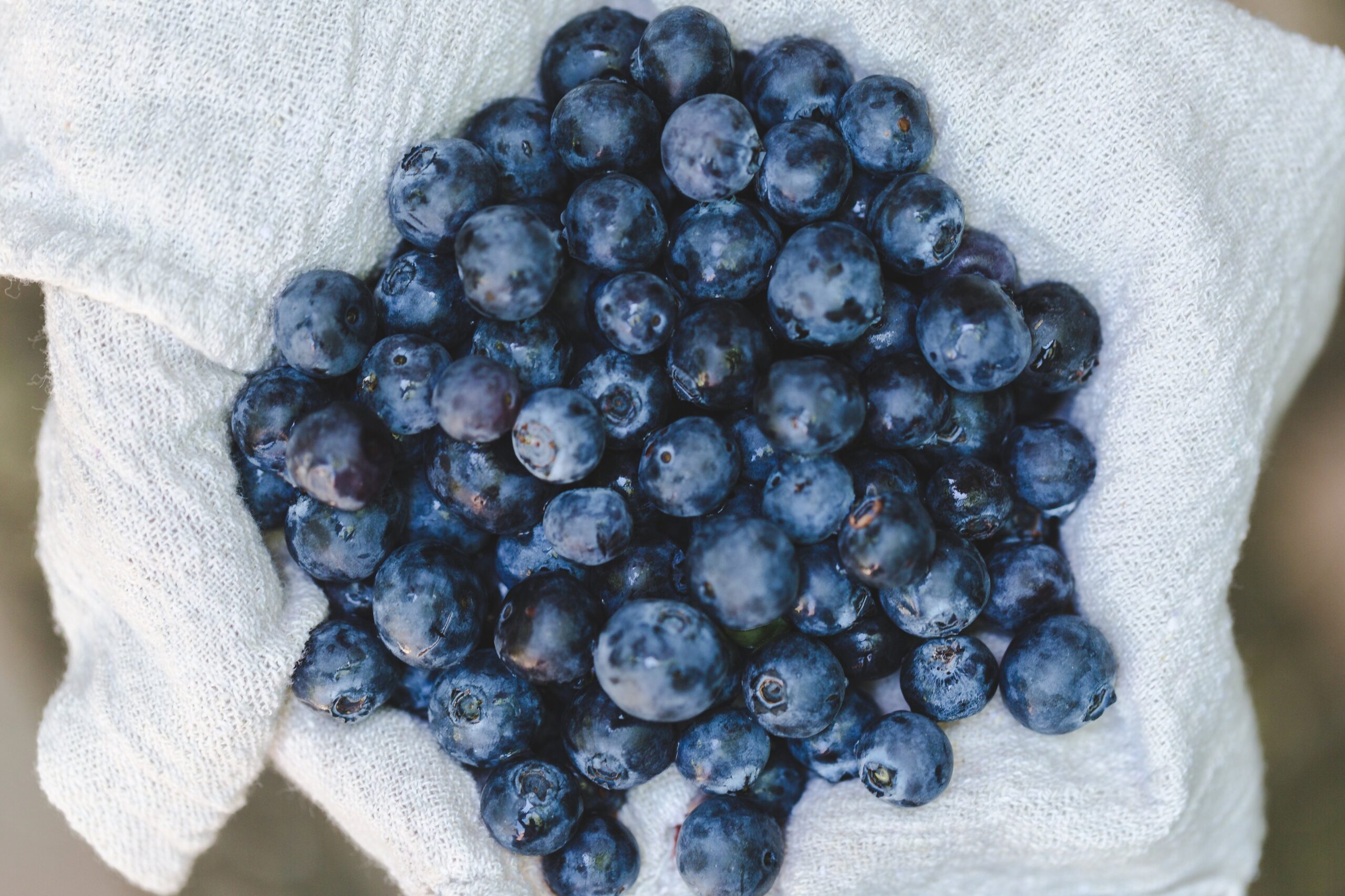
What are some different types of blueberries?
There are several types of blueberries, each with distinct characteristics that make them suitable for different growing conditions and culinary uses. Here are some of the main types:
- Highbush Blueberries :
- Northern Highbush: These are the most common type of blueberries grown commercially in the United States. They thrive in regions with cold winters and have large, sweet berries. Popular varieties include 'Bluecrop', 'Jersey', and 'Duke'.
- Southern Highbush: Developed to grow in milder climates, these hybrids are a cross between northern highbush and native southern species. They are more heat-tolerant and bloom earlier. Varieties include 'Misty', 'Sharpblue', and 'Emerald'.
- Lowbush Blueberries:
- Often referred to as "wild blueberries," these grow close to the ground and produce small, intensely flavored berries. They are common in Maine and Canada and are usually harvested commercially for processing into products like jams and frozen berries.
- Rabbiteye Blueberries:
- Native to the southeastern United States, rabbiteye blueberries are highly adaptable and tolerant of hot climates. They have a long ripening season and are often used for fresh consumption and processing. Popular varieties include 'Brightwell', 'Climax', and 'Tifblue'.
- Half-High Blueberries:
- These are hybrids between highbush and lowbush blueberries, designed to be cold-hardy like lowbush types but with larger fruit like highbush types. They are ideal for colder climates and have a compact growth habit. Varieties include 'Northblue', 'Northcountry', and 'Northsky'.
- Wild Blueberries:
- True wild blueberries are lowbush varieties that grow naturally in the wild. They are not cultivated but are often harvested commercially from natural stands. They are prized for their small size, intense flavor, and high antioxidant content.
What are some different types of blackberries?
Blackberries come in several different types, each with unique characteristics suited for various growing conditions and culinary uses. Here are some of the main types of blackberries:
- Erect Thorny Blackberries:
- Description: These blackberries grow upright and typically have thorns on their canes.
- Varieties: Popular varieties include ‘Kiowa’, known for its large fruit size and excellent flavor, and ‘Cherokee’, which is valued for its early ripening and high yield.
- Erect Thornless Blackberries:
- Description: Similar to the erect thorny types but without the thorns, making them easier to harvest.
- Varieties: ‘Navaho’ is a popular variety known for its sweet, firm berries and long harvest season, while ‘Ouachita’ produces high-quality berries with good disease resistance.
- Trailing Thorny Blackberries:
- Description: These blackberries have canes that trail along the ground and are typically very productive but require support.
- Varieties: ‘Boysenberry’, a well-known variety, is actually a hybrid of several berry types and has a distinct, sweet-tart flavor. ‘Loganberry’ is another variety, known for its tart flavor and use in preserves.
- Trailing Thornless Blackberries:
- Description: Trailing types without thorns, which also require support structures like trellises.
- Varieties: ‘Thornless Boysenberry’ retains the flavor of the boysenberry without the thorns, and ‘Hull Thornless’ is known for its large, sweet berries and disease resistance.
- Primocane-Fruiting Blackberries:
- Description: These blackberries produce fruit on first-year canes (primocanes) as well as on second-year canes (floricanes), offering the potential for two harvests per year.
- Varieties: ‘Prime-Ark Freedom’ is notable for its large, flavorful berries and thornless canes, and ‘Prime-Ark 45’ offers good heat tolerance and consistent fruit production.
- Semi-Erect Blackberries:
- Description: These types are a cross between erect and trailing varieties, often requiring less support than fully trailing types.
- Varieties: ‘Chester Thornless’ is a popular semi-erect variety known for its high yield and large, sweet berries. ‘Triple Crown’ is another semi-erect type, famous for its vigorous growth and high-quality fruit.
- Wild Blackberries:
- Description: These are the original blackberries that grow naturally in the wild, often with thorns and smaller, more intensely flavored berries.
- Varieties: Various wild species include ‘Rubus allegheniensis’ (Allegheny blackberry) and ‘Rubus fruticosus’, commonly found in North America and Europe.
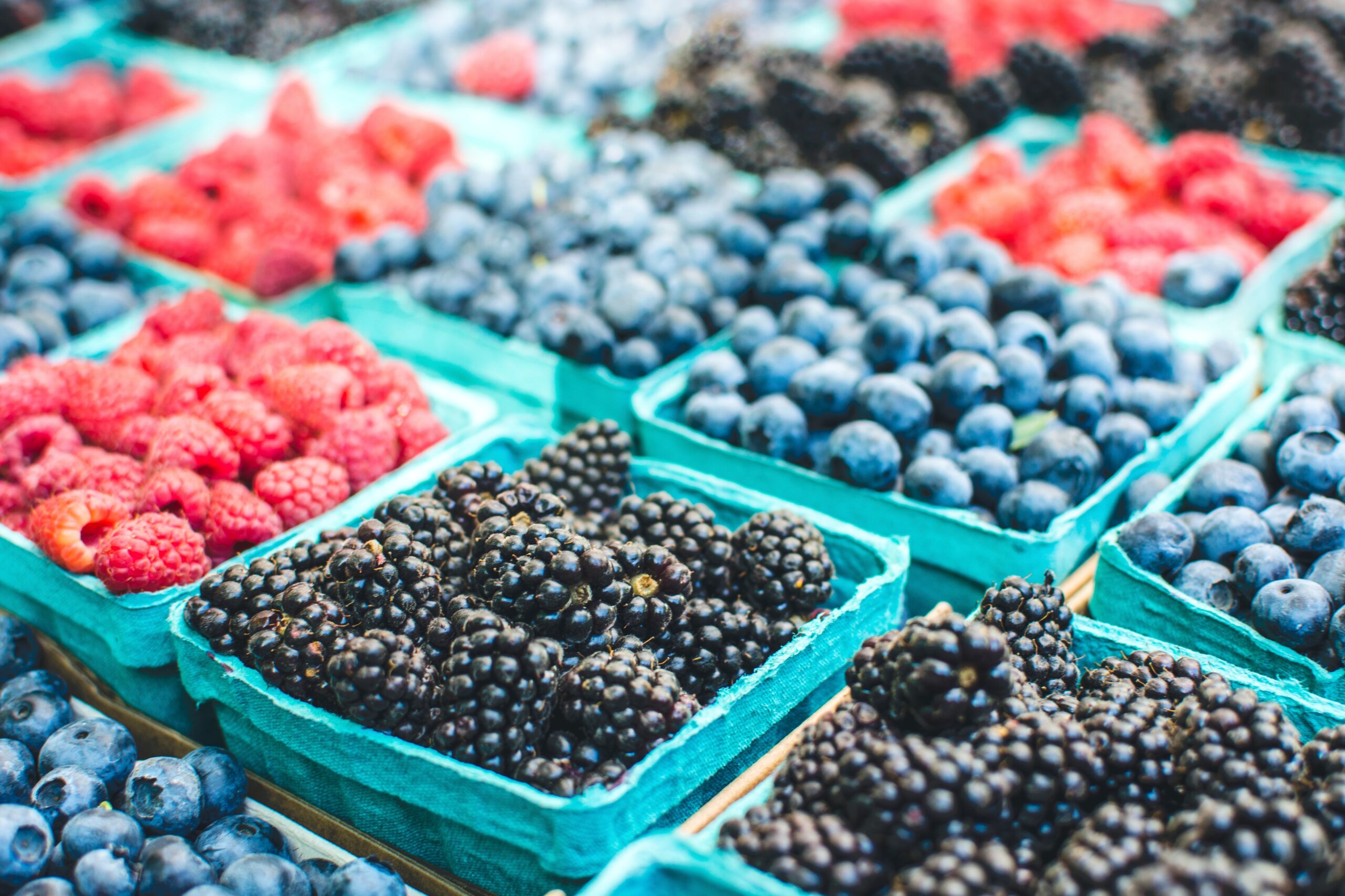
Beyond Blackberries vs Blueberries: What are some other types of healthy berries?
There are many types of berries beyond blackberries vs blueberries that are known for their health benefits. Here are some other healthy berries:
- Strawberries:
- Description: Strawberries are bright red, juicy, and sweet, with a distinct aroma.
- Health Benefits: They are rich in vitamin C, manganese, folate, and antioxidants. Strawberries promote heart health, help regulate blood sugar levels, and have anti-inflammatory properties.
- Raspberries:
- Description: Raspberries are typically red, but there are also black raspberries, purple, or golden, with a delicate texture and tart-sweet flavor.
- Health Benefits: High in fiber, vitamin C, and antioxidants, raspberries support heart health, aid digestion, and have anti-cancer properties. They are also low in calories, making them a great choice for weight management.
- Cranberries:
- Description: Cranberries are small, red berries with a tart flavor, commonly used in sauces, juices, and dried forms.
- Health Benefits: Known for their high levels of antioxidants and vitamins C and E, cranberries are effective in preventing urinary tract infections, improving immune function, and promoting heart health.
- Goji Berries:
- Description: Also known as wolfberries, goji berries are small, red-orange berries with a slightly sweet and sour taste.
- Health Benefits: Rich in vitamins A and C, iron, and antioxidants, goji berries support immune function, improve skin health, and may help protect against eye diseases. They also contain all essential amino acids, making them a good protein source.
- Acai Berries:
- Description: Acai berries are small, dark purple berries that grow on acai palm trees in the Amazon rainforest.
- Health Benefits: Acai berries are loaded with antioxidants, healthy fats, and fiber. They support heart health, improve cholesterol levels, and have anti-aging and anti-inflammatory properties.
- Elderberries:
- Description: Elderberries are small, dark purple berries from the elder tree, often used in syrups, jams, and supplements.
- Health Benefits: High in vitamin C, dietary fiber, and antioxidants, elderberries boost the immune system, reduce inflammation, and may help alleviate cold and flu symptoms.
- Gooseberries:
- Description: Gooseberries come in various colors, including green, red, yellow, and purple, with a tart flavor.
- Health Benefits: They are rich in vitamins C and A, dietary fiber, and antioxidants. Gooseberries promote digestive health, improve skin and hair health, and support a healthy immune system.
- Currants:
- Description: Currants are small berries that can be black, red, or white, each with its unique flavor profile ranging from sweet to tart.
- Health Benefits: Black currants are particularly high in vitamin C and antioxidants. They support immune function, reduce inflammation, and improve heart health. Red and white currants also provide significant amounts of vitamins and minerals.
- Mulberries:
- Description: Mulberries come in black, red, and white varieties and have a sweet flavor with a hint of tartness.
- Health Benefits: They are high in vitamin C, iron, and antioxidants. Mulberries promote digestive health, improve blood circulation, and support healthy immune function.
- Boysenberries:
- Description: A hybrid berry, boysenberries are large, dark purple berries with a juicy, sweet-tart flavor.
- Health Benefits: Rich in vitamins C and K, fiber, and antioxidants, boysenberries support heart health, improve digestion, and have anti-inflammatory properties.
Berry Recipes from Each Healthy Bite
